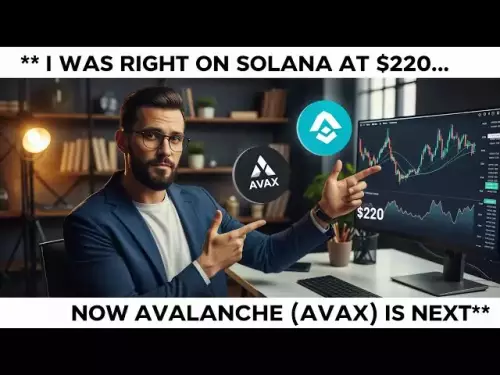 |
|
 |
|
 |
|
 |
|
 |
|
 |
|
 |
|
 |
|
 |
|
 |
|
 |
|
 |
|
 |
|
 |
|
 |
|
Cryptocurrency News Articles
The pitfalls we have experienced and the lessons we cannot avoid
Mar 14, 2025 at 06:28 pm
It is said that the current business environment is not good. The unemployed cannot find jobs, and the employed are easily laid off

In the rapidly evolving landscape of Web3, where new opportunities and challenges emerge at every turn, it is crucial for investors to stay vigilant and make informed decisions. As we navigate this exciting domain, we must be aware of the common pitfalls that can lead to disappointment and financial setbacks.
In the realm of Web3 investment, many fall into the trap of viewing project success as a mere "horse race bet," believing that as long as they select a winning project, they will be guaranteed substantial returns. However, this approach, driven solely by luck, often pushes investors into the abyss of failure. Having witnessed the blockchain industry from close quarters for the past six years, I have encountered numerous projects that shimmered on the surface but concealed a "minefield" of problems. Their ultimate failure not quickly brought losses to investors but also sounded a profound warning for the entire industry.
Hot spot chasers: Hot concepts but no real implementation
In the sphere of Web3, market hot spots are continually emerging, such as "AI+Web3" and "RWA (real asset tokenization)," which have been particularly prominent this year. Some projects seize the opportunity and quickly attract attention and capital through skillful packaging. However, their technical capabilities and market strategies often fail to stand up to close scrutiny.
Take a specific "AI+Web3" project that emerged in early 2024. The team engaged in high-profile publicity, combining artificial intelligence and blockchain to launch the world's first decentralized AI content creation platform. The project painted a grand vision of "decentralized storage and efficient edge computing" in its white paper and secured over $20 million in early financing. Nevertheless, the subsequent development progress lagged far behind the plan, and the team's technical capabilities, particularly in assessing the feasibility of real application scenarios, came into question. Ultimately, the project announced that it would be shutting down due to a broken capital chain after just six months, and its token price plummeted 90% from its high point, causing substantial losses for investors.
Rapid coin issuance: From dream to harvest, the Web3 scam
As the saying goes, "a project that does not issue tokens is not a good project." However, in some domains, issuing tokens has become synonymous with cutting leeks. Some project teams mobilize funds by quickly issuing tokens, view token issuance as their core goal, and quickly withdraw after achieving short-term capital gains, with little actual development progress to show for it. This myopic behavior has led to many investors being reaped in the fantasy of overnight riches, while the project team turns around and starts a new venture, repeating the same routine.
Take the popular MEMECoin project in 2024. This token, with the theme of "Trump's victory," attracted a large influx of speculators in a short span, raising over $10 million. However, this token's white paper was largely empty, using meme culture and political events as marketing gimmicks and lacking any product landing or technical support. As the news of Trump's victory subsided, the market heat dropped sharply, and the token price plummeted more than 95% in just a few days. Many investors failed to even recover their initial costs, whereas the project team quickly profited at the time of listing through a high proportion of pre-sale shares.
The illusion of high valuation: Pseudo-prosperity in the bubble
Web3's highly valued projects are often packaged as "future unicorns" by exaggerating the market size, inflating user data or fabricating revenue sources to create an illusion that investment opportunities are slipping away. However, the actual operational capabilities of such projects often seriously out of line with their high valuations, leading to a rapid decline in market value after launch and heavy losses for investors.
The most direct example is the dispute between market value and FDV. In the past two years, many projects have set their total token amount to billions or even tens of billions when issuing coins, and then publicized their total market value to be millions or even tens of millions. However, this data is often calculated using FVD, which is calculated based on the total token amount. On average, a single token may not even have 0.1 US dollars, not to mention the market circulation. Therefore, many investors are criticizing whether the so-called market value is calculated based on the amount of tokens that have been unlocked, the market circulation, or the total issuance. If it is calculated based on FDV, it often causes a large information error.
Despite the chill of the external environment, the future of Web3 does not seem to have stopped.
As macroeconomic uncertainty continues and the crypto market experiences another round of decline, there are signs that the pace of capital reduction in the Web3 industry is slowing down. After a period of rapid development, the investment enthusiasm in emerging tracks such as RWA and ZK technology is gradually cooling down, and the proportion of new projects receiving large-scale financing is also decreasing
Disclaimer:info@kdj.com
The information provided is not trading advice. kdj.com does not assume any responsibility for any investments made based on the information provided in this article. Cryptocurrencies are highly volatile and it is highly recommended that you invest with caution after thorough research!
If you believe that the content used on this website infringes your copyright, please contact us immediately (info@kdj.com) and we will delete it promptly.






























































